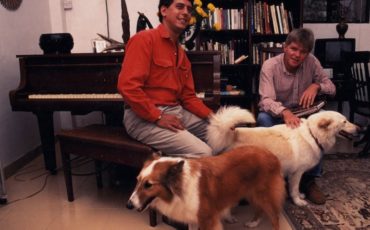To celebrate the upcoming centenary of Howard Carter’s discovery of the tomb of the young Egyptian Pharoah, the Tutankhamun: Treasures of the Golden Pharoah exhibition runs at the Saatchi Gallery in the Duke of York HQ until 3 May next year. The Tutankhamun London Exhibition has already been seen by record numbers in Los Angeles and Paris and, following their appearance at the Saatchi Gallery, the exhibits will return to a purpose-built museum near Cairo and it is unlikely they will ever leave their home country again.
Tutankhamun came to the throne at the age of nine in 1334 BC and reigned for ten years until his early death. His successors tried to obliterate his memory by removing all mention of him in public and he would have remained forgotten by history if Howard Carter had not discovered his untouched tomb in the Valley of the Kings in 1922.

Tutankhamun London Exhibition_Tutankhamun statue. Photo Credit: © Edwin Lerner.
Carter was supported financially by George Herbert, the Fifth Earl of Carnarvon, whose family home was Highclere Castle, where Downton Abbey was filmed. Herbert was a speed enthusiast, a breeder of racehorses and driver of fast cars. It was after a motoring accident that he went to Egypt to help his recovery and developed his interest in Egyptology. He obtained a licence to dig in the Valley of the Kings in 1914 and employed Carter, who had worked in Egypt since the age of seventeen, first as an artist and later as an archaeologist.
In 1922, after several years of digging, Lord Carnarvon was becoming impatient at the lack of progress and told Carter that he would finance only one more year of work. On 22 November of that year, a young water carrier stumbled over a stone which led to the top of a staircase that opened a way to an undiscovered tomb. Carter telegraphed Carnarvon, who came to the site and, as Carter chiselled a hole, asked if he could see anything. Carter made the famous reply, “Yes, wonderful things”.

Tutankhamun London Exhibition_Tutankhamun Canopic Jar. Photo Credit: © Edwin Lerner.
Many of these wonderful things, several of which have never left Egypt before, are now on display in the Tutankhamun London Exhibition. Carter spent ten years excavating and sorting over 5,000 artefacts before they were transferred to the National Museum of Egypt. Following this, he gave a successful and popular series of lectures on his work around the world. He never married or had children and died in 1939 after which he was buried in Putney Vale Cemetery. Despite making the most famous archaeological discovery of all time Howard Carter, who was entirely self-taught and from a modest background, received no honours from the British government. However, a blue plaque was later placed where he lived near the Albert Hall.
Lord Carnarvon, like others involved with the excavation, died soon after the tomb’s discovery following a mosquito bite. This led to the legend of the “curse of the pharoahs.” However, there is no record in Egypt of such a phenomenon. It was invented by the Daily Mail newspaper – an early example of fake news.

Tutankhamun London Exhibition_Tutankhamun mummy. Photo Credit: © Edwin Lerner.
Visit the Tutankhamun London Exhibition website for more information. You may also want to consider one of our London Museums & Galleries tours.







Leave a Reply